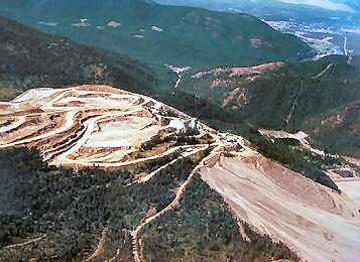Soil, Sediment, Vermiculite and Erionite
The analysis of Soil and Sediment for asbestos content continues to be a valuable tool for environmental investigations (e.g. possible illegal dumping of asbestos building materials). In all, the sampling and analysis procedures developed by EPA Region I, CARB 435 and others have proven efficacy and utility for the environmental professional.
Vermiculite minerals have been routinely used by industry in various applications and in the home as insulation. Though Vermiculite mineral originates naturally in the ground, it is not really a ‘soil’, nor is it a traditional building material. Several analytical protocols exist for the analysis of asbestos in vermiculite. These analytical approaches vary depending upon the nature of the vermiculite mineral being tested (e.g. un-processed gaunge, homogeneous exfoliated books of mica, or mixed mineral composites).
iATL recommends initial testing using the EPA 600/R-93/116 method. This method is specifically designed for the analysis of asbestos in bulk building materials. It provides an acceptable starting point for primary screening of the vermiculite for possible asbestos.
Results from this testing may be inconclusive. EPA suggests proceeding to a multi-tiered analysis involving wet separation techniques in conjunction with PLM and TEM gravimetric analysis (EPA 600/R-04/004). Please call for more information and pricing.
 The established methods published by EPA call for detailed field sampling schemes and analysis by PLM. (See FAQ) Though PLM is the method of choice due to its economy, proprietary in-house methods using TEM can be employed. iATL cautions its clients against the use of non-peer reviewed methods due to the limitations of certain analytical techniques. Data interpretation may prove difficult for these methods. There are several comprehensive references available for responsible environmental professionals who desire to be informed of the utility of these methods.
The established methods published by EPA call for detailed field sampling schemes and analysis by PLM. (See FAQ) Though PLM is the method of choice due to its economy, proprietary in-house methods using TEM can be employed. iATL cautions its clients against the use of non-peer reviewed methods due to the limitations of certain analytical techniques. Data interpretation may prove difficult for these methods. There are several comprehensive references available for responsible environmental professionals who desire to be informed of the utility of these methods.
iATL has provided analytical testing and method development services for several analytical organizations and government institutions based upon our extensive collection of mineral specimens of Erionite. This includes several variations of Erionite from the US Rocky Mountain region, Canada, and Turkey. Our Lab Director and one of our Senior Analysts are chairing an ASTM subcommittee on Erionite method development. In addition, iATL staff have presented and published several articles about this and other elongated mineral particles (EMPs) of interest.
Contact us for more information about Erionite and our current testing capabilities.

